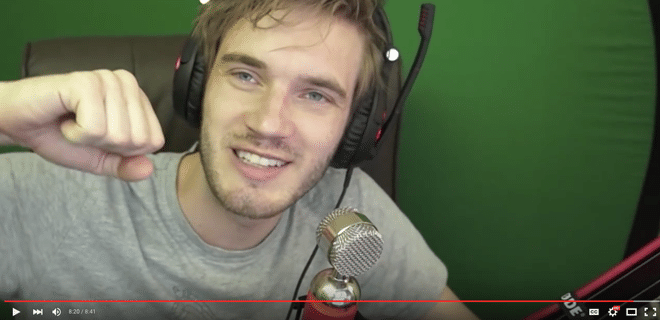Ever heard of PewDiePie? How about Smosh, Tyler Oakley or Hannah Hart? These are just a few of Professional Internet Famous People currently riding YouTube’s explosion in popularity to fame, fortune and sweet, sweet online video ad revenue. While it’s easy to dismiss these viral sensations as just another pre-teen fad, the rise of online video creators can tell us a lot about brand authenticity and how it works in the Digital Age.
Online video is becoming a very big deal. YouTube’s video ad revenue was estimated at $1.51 billion for 2015. Vidcon, a six year-old convention for all things online video, sold out the Anaheim Convention Center this year. An article in Variety surveyed 13-17 year-olds on celebrities they felt had the greatest influence on their lives. Out of the top 10, eight were YouTube stars and the other two were pop musicians Bruno Mars and Taylor Swift (who both have a serious YouTube presence through their music videos). YouTuber PewDiePie, one of the top figures on this list, made $7.4 million dollars last year, according to Forbes.
The biggest difference between internet video celebrities and “normal” celebrities, and a large part of their success, is that they connect with their fans on an intimate level through social media and videos. YouTube’s ad model encourages short videos released as often as possible, so many of the most successful YouTubers tend to make low-budget “video blog” videos about their daily lives. A lot of the time, they’re talking straight to the camera. Fans (mostly teens and preteens) feel as thought they’re actually meeting a real person (backed up by plenty of real interaction on Twitter, Instagram, etc) instead of the “public image” that movie stars and musicians often display. Many of these young stars embody a kind of “I succeeded doing something cool and different and so can you” vibe. Teens might like actors and pop stars, but they feel like they know people on YouTube.
This distinction keeps cropping up everywhere when you look at online culture. People, teens especially, respond very well to the high levels of authenticity and transparency that YouTube offers.
As PR pros, we should be aware that there’s a powerful new force out there for reaching the teen market and understand why it’s working so well. Most organizations will not be able to match the level of intimacy and authenticity that YouTube stars have, but customers still appreciate feeling like they’re talking to a real person. Be honest with your users. Know what your brand is, and is not, and be upfront about those things.
Here are a few simple ideas to improve authenticity in your marketing/PR campaigns:
- When hosting a Twitter chat or Q&A, respond to some off-topic questions or offer some personal details. “Frank, the guy who like the Seahawks and wears his blue-and-green socks on game days” is a much more interesting host than “Frank, the marketing executive.”
- Find a publication where an executive can write a weekly column to express opinions that set him/her apart from other executives
- Tweet pictures of your office space to give customers a sense of what kind of place you work at
- Host a networking event where you can meet influencers, customers and media face-to-face
- Make videos of your own!

